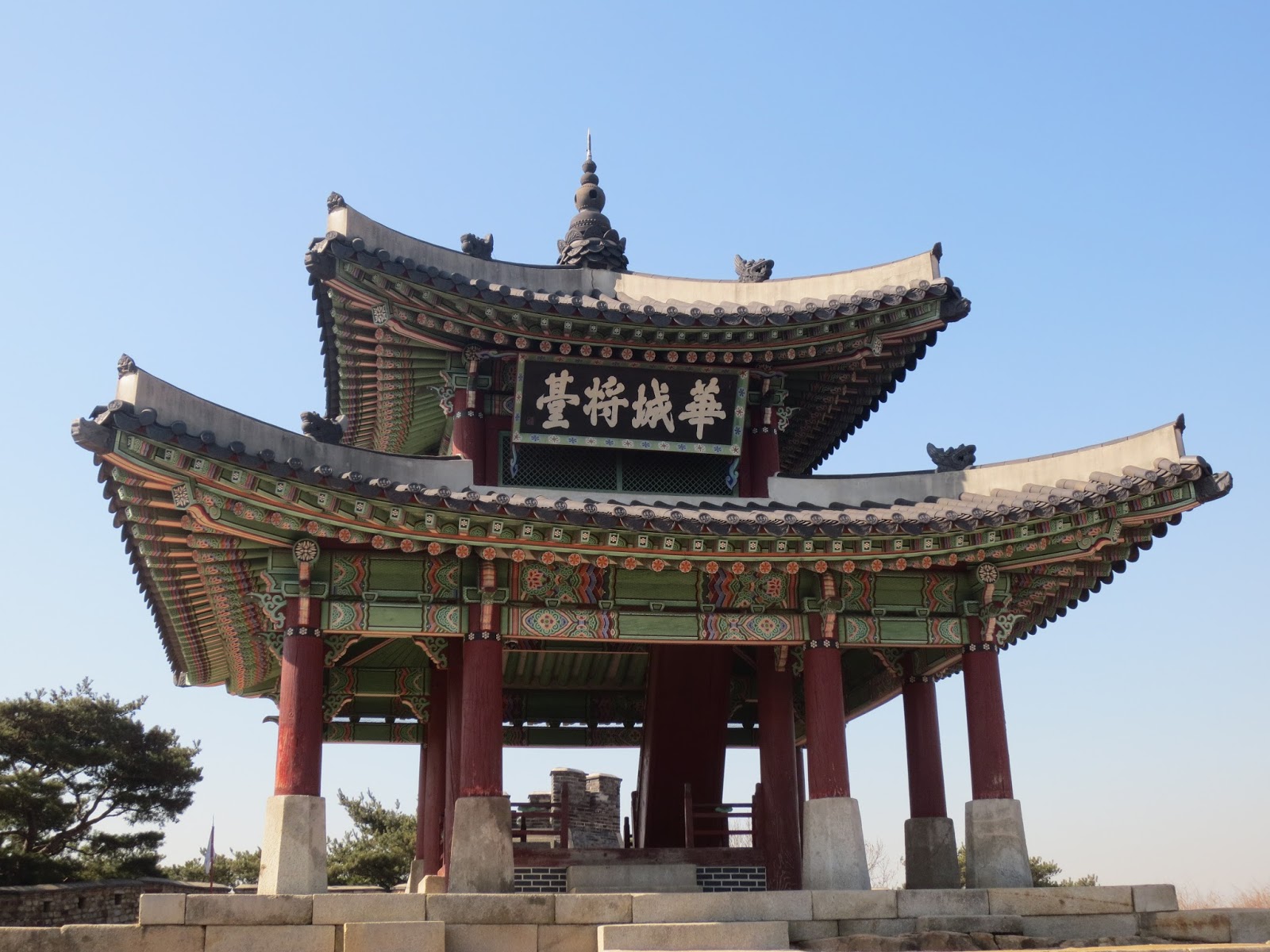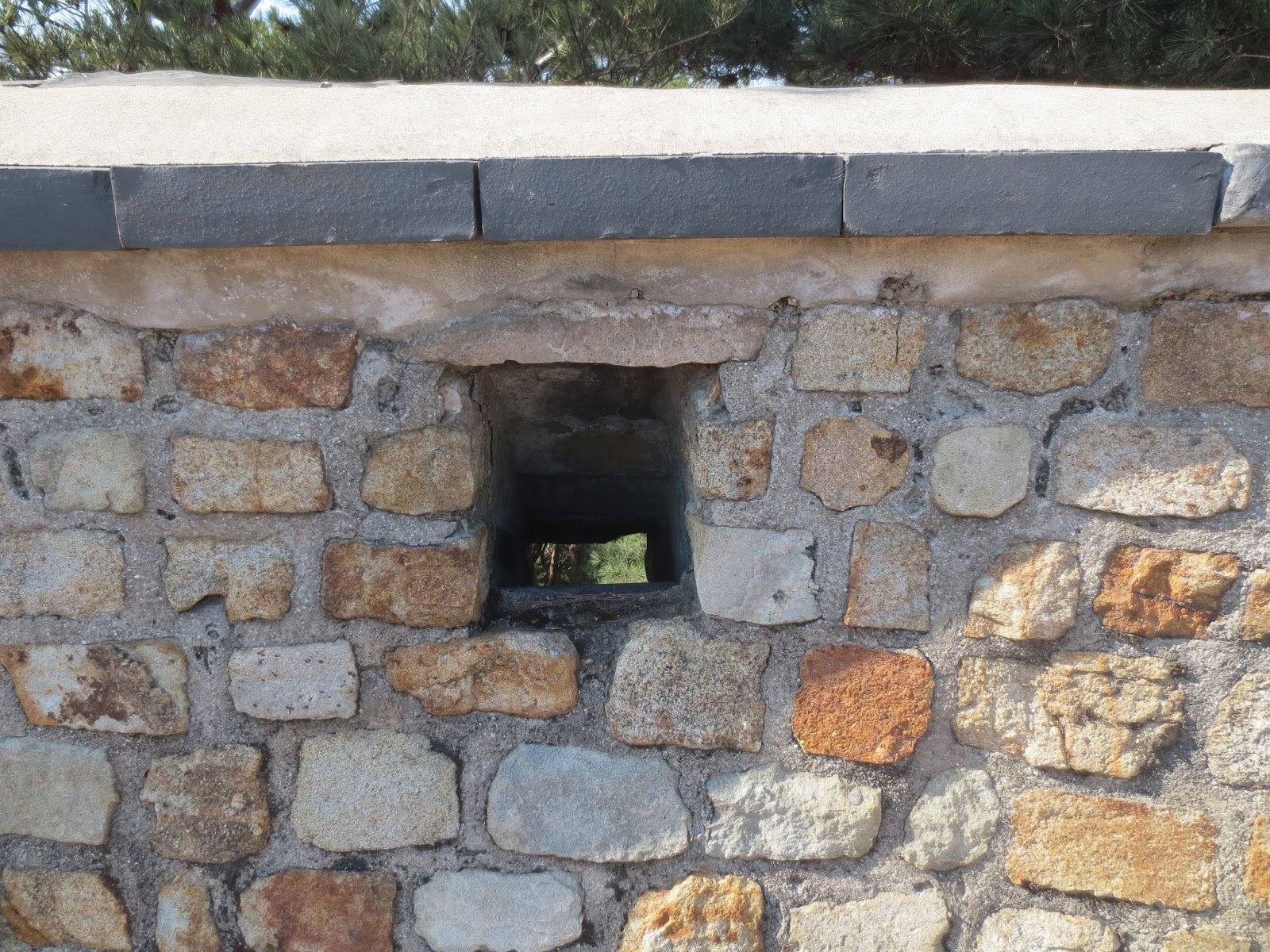This is the junior General MacArthur tree. It is a white pine tree grown from a seed of the official MacArthur tree that the US designated as a memorial to the man for his service.
This monument is outside the museum. It depicts a Korean soldier in the south reuniting with his brother in the north, their embrace bringing the halved nation together. This is an overriding theme here. As much as South Koreans want to be one Korea, most think winning a war is the only way that can happen, and no one wants war.
Inside this monument are statistics on the Korean war and a mural honoring all the countries who sent men, women, and resources to aid the battle against the spread of communism.
The building behind these missiles is the museum itself. Inside, there was history of ALL the wars this country has seen over hundreds of years.
A drum that was in the front lobby.
Below is a saddle and stirrups. I would not want to ride in that saddle. And my feet wouldn't fit in those stirrups.
Saddle and bits
a painting of one of the many battles Korea has seen
Battle flags
There was so much to see here. Much of it was the history of Korea as an ancient nation with different Korean factions fighting one another for power. A united Korea eventually saw occupation by China and Japan, with the Japanese occupation of nearly 40 years still fresh in some minds here. The Japanese occupation was brutal to the Korean people, and they continue to ask for acknowledgement and apology from the current Japanese government (as does China for Japan's occupation of much of its country). Korea existed as a united, independent (?) country immediately after World War II for only a few years when the 'Red Menace' decided to answer the Allied control of Japan and much of Asia with their own solution. A divided Korea was the best solution the world could come up with, no solution to the Korean people who share a language, culture and history too strong to be separated.
We visited back in February of 2015 and did not find my uncle's name on the wall of US soldiers lost in Korea. We were looking under the wrong state, not realizing he was not born in South Dakota. I came home and Googled him, finding he died in Korea doing his best to help a poorly equipped South Korean force. Hopefully I will get back to the War Memorial of Korea to find his name, perhaps this Veterans' Day.























































